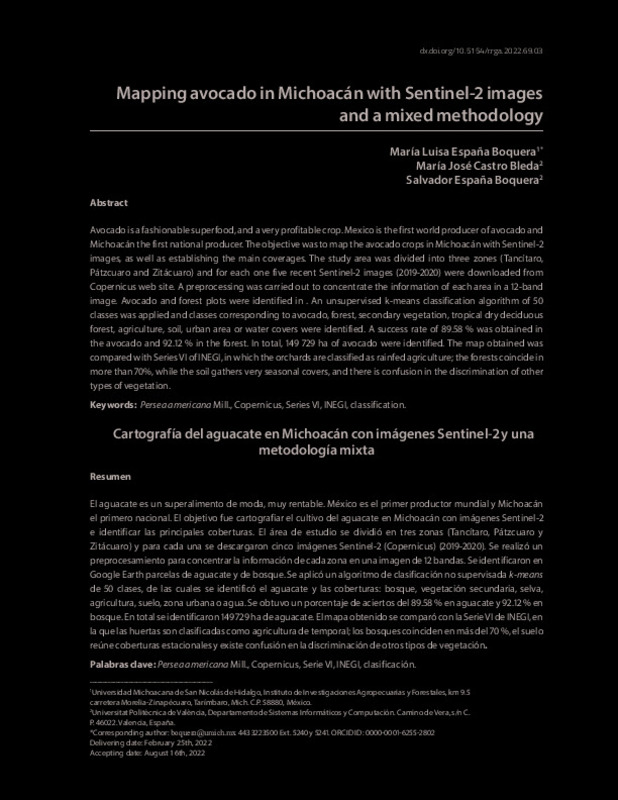JavaScript is disabled for your browser. Some features of this site may not work without it.
Buscar en RiuNet
Listar
Mi cuenta
Estadísticas
Ayuda RiuNet
Admin. UPV
Mapping avocado in Michoacán with Sentinel-2 images and a mixed methodology
Mostrar el registro completo del ítem
España Boquera, ML.; Castro-Bleda, MJ.; España Boquera, S. (2022). Mapping avocado in Michoacán with Sentinel-2 images and a mixed methodology. Revista de Geografía Agrícola. 69:61-80. https://doi.org/10.5154/r.rga.2022.69.03
Por favor, use este identificador para citar o enlazar este ítem: http://hdl.handle.net/10251/200002
Ficheros en el ítem
Metadatos del ítem
| Título: | Mapping avocado in Michoacán with Sentinel-2 images and a mixed methodology | |
| Otro titulo: |
|
|
| Autor: | España Boquera, Maria Luisa | |
| Entidad UPV: |
|
|
| Fecha difusión: |
|
|
| Resumen: |
[ES] El aguacate es un superalimento de moda, muy rentable. México es el primer productor mundial y Michoacán el primero nacional. El objetivo fue cartografiar el cultivo del aguacate en Michoacán con imágenes Sentinel-2 ...[+]
[EN] Avocado is a fashionable superfood, and a very profitable crop. Mexico is the first world producer of avocado and
Michoacán the first national producer. The objective was to map the avocado crops in Michoacán with ...[+]
|
|
| Palabras clave: |
|
|
| Derechos de uso: | Reconocimiento - No comercial (by-nc) | |
| Fuente: |
|
|
| DOI: |
|
|
| Editorial: |
|
|
| Versión del editor: | https://doi.org/10.5154/r.rga.2022.69.03 | |
| Tipo: |
|









